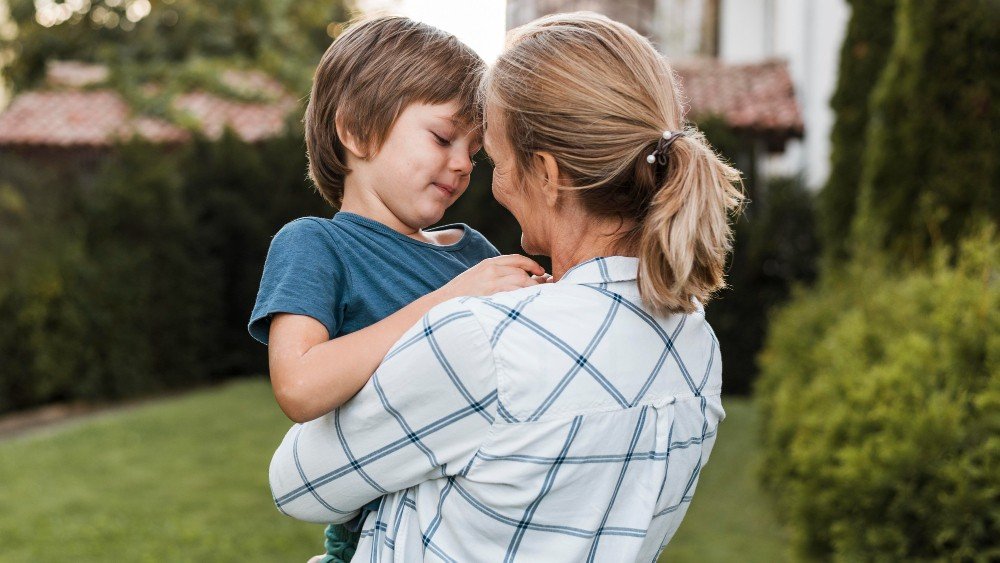A young child cannot protect himself and so easily his private space can be violated and violated.
התמימות וטוהר המחשבה הופכים אותם ל"טרף קל".
I'm writing this and I shudder. There is nothing scarier than that.
אני לא אשכח בחיים את אותו מוצ"ש, שבה לראשונה "שחררנו" את שני ילדינו שהיו אז בני 8 ו 9 לחזור הביתה לבד מחברים שגרים מרחק של דקה הליכה מאיתנו.
Walking on a central path and crowded with families and children.
Their and our first time.
Suddenly the door opens with a hysterical shout and they both enter bitterly crying that someone really scared them.
Aye... all my fears slam right into my heart.
"איש אחד נורא מפחיד שאל ובקש עזרה ואח"כ לקח והרים לחדר מדרגות.. וניסה לגעת.."
The son shouted loudly and the daughter hit him and they managed to escape. miracle.
A miracle that they immediately recognized the danger
It's a miracle they reacted like that
A miracle that they shared.
We've been through a lot with it since then. We talked a lot and supported and gave strength and also went out with them to testify and identify. And he was caught.
ברוך ה'.
Since then this topic is even closer to my heart.
וכל פעם הוא צף ומתעורר, כשמישהו רואה מישהו או שומע על "מישהו" שמסתובב ונפוצה אזהרה שמזכירה לכולם את מה שלצערי נכון תמיד, לשמור על הילדים הקטנים.
יש לי מחשבות על כל אחד מהניסים הנ"ל.
The first and most basic - how to teach a small child to recognize what is his space and what is outside his boundary and belongs to another, so that later in his life he will develop it within himself.
Basically it's about understanding his limits or rather feeling the private space.
In this he needs us parents. We are his first and most significant teachers.
Our attitude towards our space and his, before explanations and anything else.
Sometimes we trust that he will learn it from others.
דוגמא למיקור חוץ של העברת המסר הבסיסי הזה הוא העיסוק הרווח בגני הילדים סביב "נושאים" תקופתיים כמו למשל "אני וגופי" שבו, בין היתר, מלמדים ילדים לומר שלא נעים להם ולבקש רשות לגעת אחד בשני ועוד..
I have all kinds of things to say about this study, but for our purposes here, I want to argue that the cognitive understanding and the behavior that follows it are built on top of and from the feeling, and not the other way around.
The way to the mind goes through the heart.
It is not obvious that a child feels his space.
why is this
Because a small child's space is violated all the time.
The real learning of boundaries and of private space is done through the relationship with us, the caregivers.
in how we respect him.
I don't mean that we have to ask his permission to take care of him, it is wired into the bond between parent and child, and this is the first obligation of every parent.
חוץ מזה ילד צעיר בד"כ יענה בשלילה על שאלות כאלה (אפשר לתת לך חיבוק? אתה רוצה שנחליף טיטול?) ברור שהתשובות הן לא! ולא! ולפעמים גם לאאא!!!
If he is resistant to treatment or even just indifferent, does not indicate that it does not arouse him emotionally.
It is true that he is small and we can enter his space whenever we want and even rudely, but it is neither worthwhile nor worthwhile because it teaches him more about himself, and tells him that it is okay and even allowed to invade his space.
We take care of the child - blow his nose. Changing his diaper. dress up download feed Showers.. all these actions of the routine of life that sometimes feel Sisyphean, may hide the child from us. That is, the eyes see but the heart is a little disconnected and then we may enter its space with disrespect and disrespect. A bit like an object.
When the focus is on achieving the desired result, we are focused on our need.
When our gaze is on the child, it is important that we turn to him and awaken him to us before entering his space.
A moment of attention, of gathering, of creating a connection, which also directs our attention to what it evokes in him.
Of course, this does not mean that if he does not want or opposes the treatment he needs, he is the one to decide what to do, but it signals and reminds us to give the emotion a place, to be empathetic.
Always remember that the emotion is completely legitimate, and its expression is the beginning of a child's sense of security that we the parents and/or kindergarteners address and support for him with everything in him. that we are home
Alongside this, the demand can be held and insisted on, with our understanding that this treatment is necessary and is in his best interest.
Hope I'm understood here. It is important for me to make the distinction between the boundaries from the outside or the leaderships we lead to, which can go hand in hand with maintaining the child's inner boundary.
It is not one at the expense of the other.
Another important thing for me to highlight:
Have you thought what happens when we explain and teach protection to the young child through verbal messages of how to prevent / protect / react?
Are we actually transferring to him the responsibility to protect himself?
A young child is not ready for this, it is too much for him. It's a load, it's too scary and therefore unnecessary.
It is our responsibility to protect the young child.
In order for a child to be able to preserve and protect himself, the initial protection we can give him is, as mentioned, the feeling of his private space. So that he can recognize when his space is created or even just violated a little and what it does to him. It develops his sensitivity to it and that is super important.
Later on, the layer of awareness is added to it, but this is the basis.
This is an indirect and subtle intervention, it does not touch this issue directly and does not cause panic, therefore its effect is constitutive.
It requires almost no resources from us. It is awareness that creates fine tuning that directs and returns to our hands the ability to provide protection for our children.
In prayer for great protection for all children, small and large, wherever they are.
This article has a follow-up article - Protected in early childhood - a follow-up article
About the author:
She runs a daycare center with the attachment approach and guides in four gardens where her foundations are planted
Facilitator of group workshops ~ accompany individual in-depth processes in the clinic.


